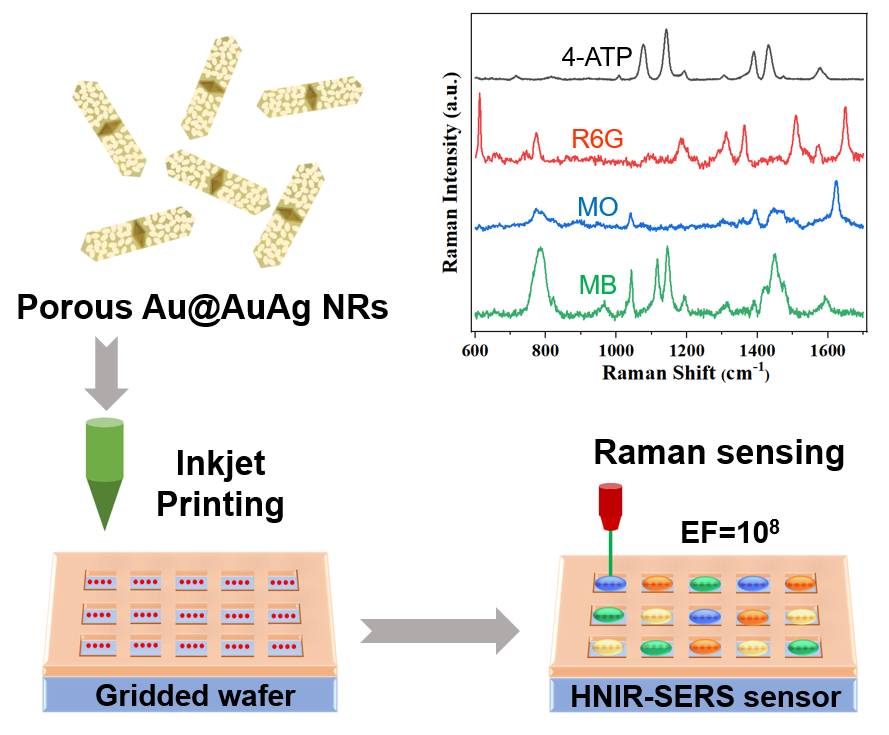
Preparation of the HNIR-SERS sensor and SERS spectra of different molecules with same concentration on the HNIR-SERS sensor. Image Credit: WANG Yifan.
Misusing biochemical molecules could lead to considerable environmental issues, so developing affordable sensors for detecting such molecules is necessary.
The sensor developed by the researchers is known as the high-throughput near-infrared surface-enhanced Raman scattering (HNIR-SERS) biochemical sensor. It combines plasma metal nanoparticle inkjet printing technology and allows high-sensitivity detection of multiple biochemical molecules in a single substrate.
For this sensor to be developed, scientists used imprinting technology to fabricate a grid substrate with isolated regions arranged in a normal cubic pattern.
They assembled porous Au@AuAg nanorods on the substrate utilizing inkjet printing, forming the HNIR-SERS sensor. This new kind of sensor obtains high specificity and sensitivity in detecting multiple biochemical molecules on a single substrate.
The scientists have illustrated the effectiveness of the HNIR-SERS sensor by detecting 4-aminothiophenol (4-ATP), methyl orange (MO), rhodamine 6G (R6G), and methylene blue (MB) with an enhancement factor of 108 for 4-ATP.
This development offers an efficient method for identifying high-throughput and affordable NIR-SERS sensors and could set the stage for practical applications in Raman detection chips.
Journal Reference
Wang, Y., et al. (2023) High-throughput surface-enhanced Raman scattering sensors for near-infrared detection of biochemical molecules. Journal of Materials Chemistry C. doi.org/10.1039/D2TC05542B.